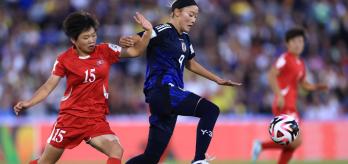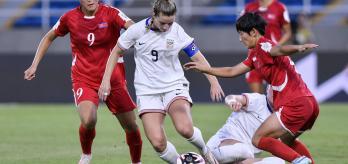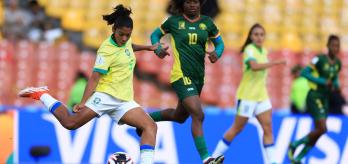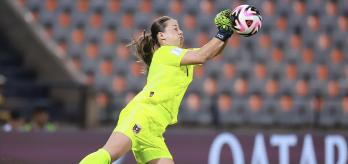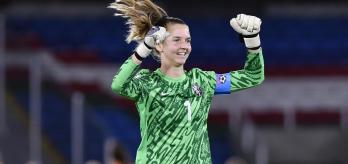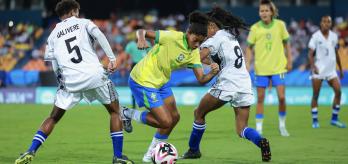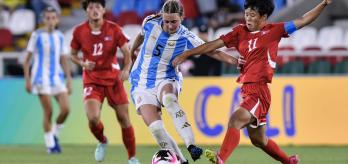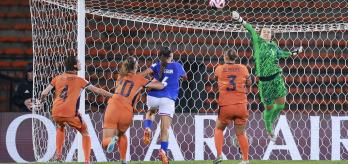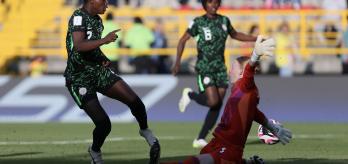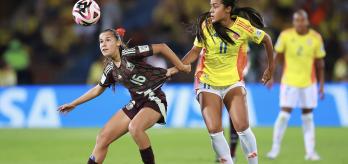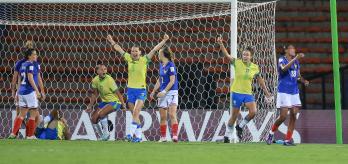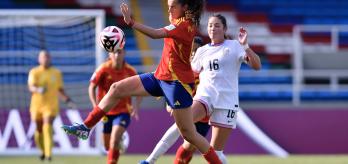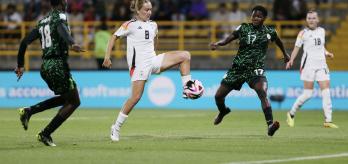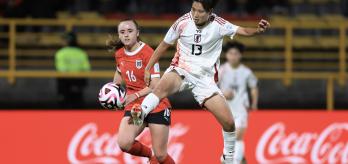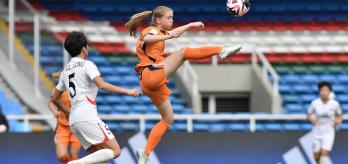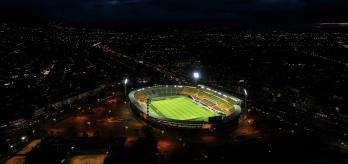During our analysis, it emerged that goalkeepers were saving more attempts at goal from outside the penalty area in comparison to the last competition at this age level two years ago.
The data provided by our Football Performance Insights Team shows that 38.37% of all attempts at goal were on target in 2024, compared to 34.86% in 2022. Attempts on target from inside the penalty area increased from 39.67% to 42.41% in Colombia while attempts on target from outside the penalty area were up by 3.88% from 28.98% to 32.86%. Interestingly, in Colombia 2024, goalkeepers were saving 52.54% of the attempts on target from outside their penalty area, up almost 6% from 46.95% in Costa Rica 2022.
According to TSG member Pascal Zuberbühler, improvements in the goalkeeper’s strength, power and timing are important factors in this development.
POWER AND EXPLOSIVITY
To be able to save attempts at goal from distance, goalkeepers need power, a solid starting position, a good view and should be set by the time the strike at goal is made. Little steps can be made to adjust their position as the ball travels from long-range, but they must be stable in order to generate the power needed to reach the ball, which will often travel at speed.
“Zubi” states that, “With many U-20 goalkeepers now training in full-time, professional environments, we can see the development in their athleticism, explosivity and in the power they are generating to reach attempts at goal from outside the penalty area.”
Starting position
The goalkeeper’s starting position is vital in these situations and getting this right gives them the platform to make these explosive saves. As Zuberbühler explains, some goalkeepers are more offensive in their positioning and others prefer to start closer to their goal.
“We will see in the clips below how the goalkeepers stay on their feet for as long as possible and understand when to make their explosive jumps so they can generate maximum body length as the ball arrives in their vicinity. In previous World Cups, particularly at underage level, numerous goals were scored from long-range and often this was down to starting positions and timing, but in this tournament, it is clear to see how much the goalkeepers are training these things and how much power and flexibility they have.”
In the section below, Zubi explains the key components of saves made by goalkeepers at the FIFA U-20 Women’s World Cup Colombia 2024.
Offensive starting position
Canada goalkeeper Noelle Henning has adopted an offensive starting position. In this example, we can see how she stays on her feet for as long as possible and only jumps when the ball is about eight metres away. Her feet are set, and she pushes off her right leg with real power, generating great length in her body. Furthermore, she uses a strong right hand to make the save and deflect the ball around the post. Her athleticism, judgement and timing are at a high level in this saving action.
Similarly, in clip 2 below, we see Golden Glove winner and the Netherlands’ goalkeeper, Femke Liefting, take a starting position two metres from her goal line as she prepares for an attempt at goal from 25 metres. Again, she stays on her feet until very late, only pushing off her right foot as the ball enters her six-yard box.
Deep starting position
In clip 3 below, we see an explosive save from Cameroon goalkeeper Cathy Biya after a defensive clearance falls to unmarked Colombia forward, Linda Caicedo. The attempt at goal is made early and comes from 26 metres out but Biya has a starting position close to her goal line and has a clear view. As the ball travels towards her, she remains on her feet, and this allows her the time to judge the flight of the ball before making an explosive jump at full stretch to push the ball over the crossbar.
Adjusting from starting position
When an attempt at goal is travelling from longer distances, there can be time for the goalkeeper to adjust from their starting position to cover more of their goal area. In clip 4, we see a great example of how Austria's goalkeeper, Mariella El Sherif (1), takes two small steps to her left as the ball travels from 32 metres. In doing this, she gains extra reach and makes an excellent save that would not have been possible had she remained in her starting position.
According to Zuberbühler, “This is outstanding goalkeeping because if that ball had gone into the net, we would have said it was an incredible strike at goal and there was nothing the goalkeeper could do, but these small steps were absolutely crucial. This is very high-level shot-stopping from a 19-year-old goalkeeper.”
Adjusting position when there is no clear view
In a crowded penalty area, it is not always possible for the goalkeeper to get a clear view when an attempt at goal from distance is being executed. In these situations, the goalkeeper must have high levels of concentration and focus, maintaining awareness as the ball moves. In clip 5 below, the USA's goalkeeper, Teagan Wy (1), makes a world-class save despite not having a clear view of the ball when it was struck from just outside her penalty area.
As the attempt at goal is being made, she is in the set position and leans to her right to try to see the point from which the ball is being struck. She has very little time to react as the ball travels towards her at great speed. As the ball passes the penalty spot, she begins her explosive jump, generating impressive height which enables her to get a crucial touch on the ball at full stretch.
Zubi notes that, “The power she generates here is very impressive. She is in a slightly deeper starting position, but she reads the situation so well and times her jump to perfection. The strength and flexibility shown to deflect the ball when at full stretch is top level, especially when she did not have a clear view of when the ball was struck”.
Key take-aways
-
Adopting a good starting position.
-
In the set position with a clear view.
-
Timing of the jump – staying on feet for as long as possible to generate maximum body length as the ball arrives.
-
Adjusting from the starting position as the ball travels from further distance to increase coverage of the goal area.
-
Power and explosivity to generate maximum body length when attempting to make a save.






